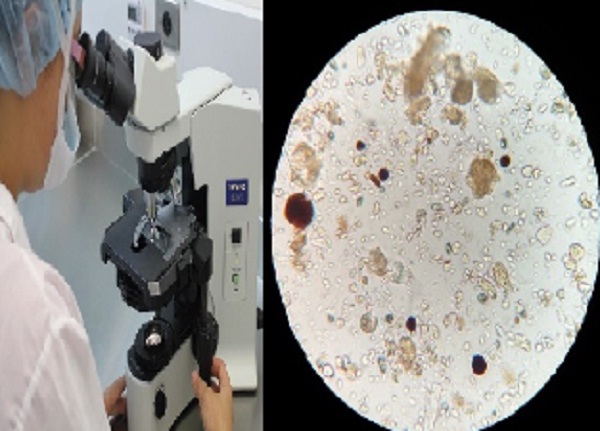Continuing with the line of laboratory instruments used for research. The time has come for the microscope, as already it has been said in previous posts. This was an invention that completely modified the field of scientific research and biological study. In this article you will learn the basics of the bright field microscope and its uses in the scientific field.
What is the bright field microscope? 🔬🤍
Known as bright field microscopy this is the most simple of the illumination techniques applied in optical microscopy. And it is this very simplicity what makes it one of the most popular in use. Its name comes from the typical appearance of its image which is a background bright with an opaque or dark sample.
In this microscope the sample is illuminated from below with white light and is observed from above. The contrast is generated by the attenuation of light caused by the dense areas of the sample.


Composition of the bright field microscope 🔬🧬
This type of microscope is a simple modification of the common optical microscope, so its parts and composition is almost the same. However, it has a certain difference in the path of light, which is as follows:
Light source that can be a halogen lamp located at the base of the microscope.Condenser lens which focuses the light on the sample placement area.Objective lens which collects the light that exit the sample and zoom in on that image.Eyepieces or camera used to visualize the image in question.
Improvement
We can talk about that there are a number of improvements in terms of to the design of the light field microscope, which are the following:
One of the most notable differences with the microscope optical is that you can use Köhler illumination to illuminate the sample.
The amount of light emitted from the fountain with an element called an iris diaphragm.
Allows the use of a glass-like refractive oil with an immersion lens which improves the image resolution of sample.
Allows the use of staining on samples by different methods such as simple and differential staining.
You can use the polarizer filter or color filter. Which allows to highlight features not visible in white light.
Advantages and disadvantages of bright field microscope 🔬💎
Advantage
It has a fairly simple configuration that only deserves basic equipment and makes it very easy to use. In addition the simple fact of allowing the observation of living cells makes it
in an excellent team.
Disadvantage
It has a low contrast for most samples biological. The limit of the magnification possessed by the optical microscope, which oscillates around 1300X. It makes it difficult to maintain the clarity of the image. I don't know they appreciate transparent samples well so one should resort to the use of staining.
Applications of bright field microscopy 🦠🧫
Despite being one of the simplest microscopes in as for operation, the bright field microscope. It is a tool wonderful in the field of research as it allows the observation of cellular tissues or
cells alone. Tinted or not, their structure can be observed perfectly with this team.
Now you can say that you know the basics of the bright field microscope and make your own comparisons with the other varieties of microscopes. In addition, knowing the operation and use of each microscope will allow you to correctly choose the equipment according to your needs. If you want to know many more about this topic, be sure to visit our other publications.

